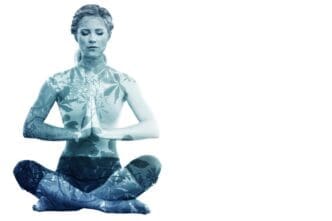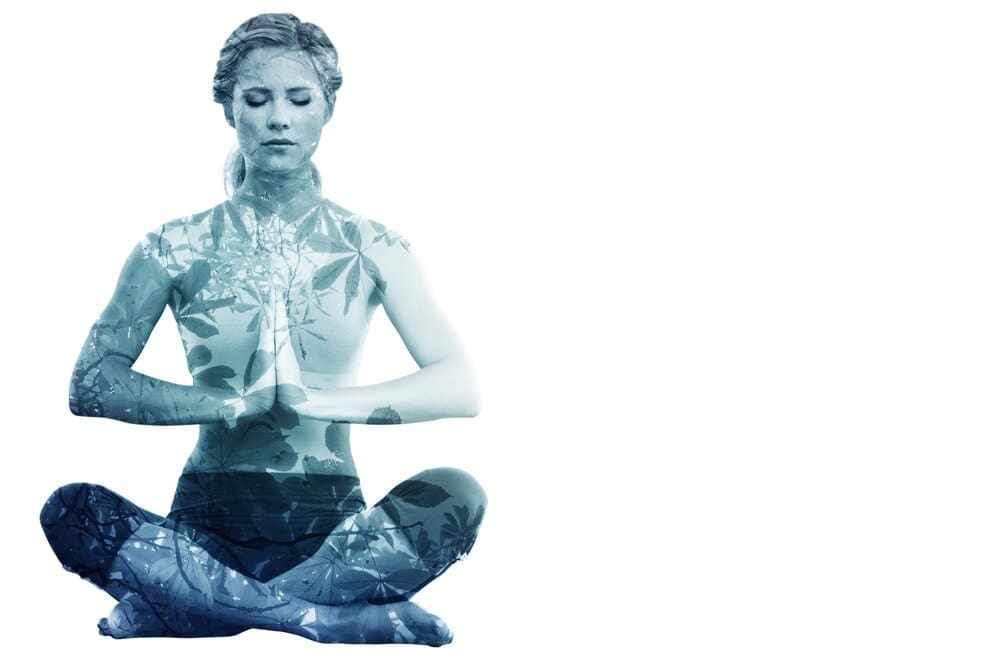The body scan meditation is a foundational mindfulness practice where an individual systematically brings gentle, non-judgmental awareness to each part of their body, from the tips of the toes to the top of the head. Anyone can perform this exercise, typically while lying down or sitting comfortably in a quiet space where they won’t be disturbed. The primary purpose of the body scan is to reconnect the mind with the physical self, helping to release stored tension, reduce the physiological symptoms of stress, and cultivate a deeper state of present-moment awareness, which research shows can significantly improve mental and physical well-being.
What is a Body Scan Meditation?
At its core, a body scan is a guided tour of your own physical landscape. Instead of letting your mind wander aimlessly or get caught in cycles of worry, you intentionally anchor your attention in the raw, physical sensations occurring throughout your body. It is a cornerstone of many modern therapeutic programs, most notably Mindfulness-Based Stress Reduction (MBSR), developed by Dr. Jon Kabat-Zinn.
Unlike some relaxation techniques that actively encourage you to force your muscles to relax, the body scan has a different goal. The primary instruction is simply to notice what is already there. You might observe warmth, coolness, tingling, pressure, contact with the floor or chair, or even a complete lack of sensation. You might also notice areas of tightness, soreness, or discomfort.
The key is to approach these observations with an attitude of gentle curiosity and acceptance, without judging them as “good” or “bad.” This non-judgmental stance is what separates mindfulness from other exercises. It trains the mind to observe reality as it is, which in turn reduces the mental struggle and suffering that often accompanies physical tension.
The Science Behind the Scan: Why It Works
The profound effects of the body scan are not merely anecdotal; they are rooted in well-understood neurological and physiological processes. By systematically focusing on the body, you are directly influencing your nervous system and changing your relationship with physical stress.
Calming the Nervous System
Our bodies are equipped with an autonomic nervous system that regulates involuntary functions like heart rate and breathing. This system has two main branches: the sympathetic nervous system (our “fight-or-flight” response) and the parasympathetic nervous system (our “rest-and-digest” response).
In modern life, chronic stress often keeps the sympathetic nervous system on high alert, leading to elevated cortisol levels, high blood pressure, and persistent muscle tension. The body scan meditation acts as a powerful counterbalance, activating the parasympathetic nervous system. This shift helps lower the heart rate, decrease blood pressure, and signal to the body that it is safe to relax and repair.
Reconnecting Mind and Body
The practice directly enhances a capacity known as interoception—the perception of sensations from inside the body. For many people, daily life creates a disconnect from the body; we often don’t notice physical tension until it manifests as a headache, back pain, or injury.
A regular body scan practice rebuilds this vital connection. It allows you to become more attuned to subtle cues of stress as they arise, such as a clenched jaw or tightened shoulders. By catching these signals early, you can address them before they escalate into more significant physical problems.
Breaking the Cycle of Rumination
Anxiety and stress are often perpetuated by rumination, a pattern of repetitive, anxious thoughts about the past or future. The body scan offers a powerful anchor to the present moment. It’s difficult to worry about a work deadline when you are fully absorbed in noticing the sensations in your left pinky toe.
When the mind inevitably wanders away from the body and back to its worries—which it will—the practice is not to scold yourself, but to gently and kindly guide your attention back to the body. Each time you do this, you are strengthening your “attention muscle,” improving your ability to choose where you place your focus.
How to Perform a Body Scan Meditation: A Step-by-Step Guide
While guided audio recordings are widely available and highly recommended for beginners, you can easily lead yourself through a body scan with these simple instructions. Set aside 15 to 30 minutes for your first few sessions.
Preparation: Setting the Stage
Find a warm, quiet place where you are unlikely to be interrupted. The traditional posture for a body scan is lying on your back on a mat or comfortable rug, with your legs uncrossed and arms resting gently by your sides, palms facing up. If lying down makes you too sleepy or is uncomfortable, you can also sit upright in a chair with your feet flat on the floor and your spine straight but not stiff.
Allow yourself to get comfortable. Loosen any restrictive clothing and use a light blanket if you tend to get cold. Close your eyes gently, or if you prefer, maintain a soft, unfocused gaze toward the ceiling or floor.
Step 1: Settling In and Breathing
Begin by bringing your awareness to your breath. Without changing how you are breathing, simply notice the physical sensations. Feel the air entering your nostrils, filling your lungs, and causing your abdomen to gently rise and fall. Take three to five slow, deep breaths to signal to your body that it’s time to settle.
Step 2: Beginning the Scan (The Feet)
Gently shift your focus from your breath down to your feet. Start with the toes of your left foot. Can you feel each one individually? Notice any sensations—tingling, warmth, pressure from a sock, or maybe nothing at all. There is no right or wrong answer; just observe with curiosity.
Slowly expand your awareness to include the sole of your left foot, the heel making contact with the floor, the top of the foot, and the ankle. Then, shift your attention to your right foot and repeat the entire process, exploring the toes, sole, heel, and ankle with the same gentle curiosity.
Step 3: Moving Up the Body
From your feet, begin to travel your attention slowly up your body. Bring awareness to your lower legs—your calves and shins. Move up to your knees, noticing their shape and any sensations within the joint. Continue to your thighs, feeling their weight and contact with the surface beneath you.
Bring your focus to your pelvic region, hips, and buttocks. This area often holds significant tension. Then, guide your awareness to your back, starting with the lower back, moving to the mid-back, and finally the upper back and shoulder blades.
Shift your attention to your front, scanning your abdomen and noticing the gentle rise and fall with each breath. Move up to your chest and heart center, observing the same rhythmic movement.
Step 4: Scanning the Arms and Hands
Direct your attention to the fingers of your left hand. Notice the sensations in your fingertips, palms, and the back of your hand. Travel up your wrist, forearm, elbow, and upper arm, all the way to your shoulder. Repeat this entire sequence for your right hand and arm.
Step 5: The Neck, Head, and Face
Gently bring your awareness to your neck and throat, another common area for holding tension. Without needing to change anything, simply notice what is there. Then, move your focus to your face. Soften your jaw, let your tongue rest in your mouth, and notice the sensations around your lips and cheeks.
Bring awareness to your nose, the feeling of air at the nostrils, and the area around your eyes. See if you can release any tension held in the tiny muscles here. Finally, scan your forehead, scalp, and the very top of your head.
Step 6: Concluding the Practice
Once you have scanned your entire body, take a moment to feel the body as a whole, unified field of sensation, breathing in and breathing out. Rest in this awareness for a minute or two.
When you feel ready to end the practice, slowly begin to bring some movement back into your body. Wiggle your fingers and toes. Gently stretch if it feels right. When you are ready, slowly open your eyes, taking a moment to notice the room around you before getting up.
Common Challenges and Helpful Tips
Like any new skill, meditation has a learning curve. It’s helpful to anticipate common challenges and approach them with self-compassion.
What If I Fall Asleep?
Falling asleep during a body scan is extremely common, especially when you are tired. It’s simply a sign that your body needs rest. If your goal is to stay awake, try practicing in a seated position or keeping your eyes slightly open. If you do fall asleep, don’t worry about it. You can simply pick up where you left off when you awaken.
What If My Mind Won’t Stop Wandering?
A wandering mind is not a sign of failure; it is the nature of the mind. The goal is not to have a perfectly still mind, but to notice when your attention has drifted. Each time you become aware that you are lost in thought, you have succeeded. Gently acknowledge the thought and then kindly escort your focus back to the part of the body you were scanning.
What If I Feel Uncomfortable Emotions or Pain?
Tuning into the body can sometimes bring up difficult emotions or intensify the awareness of physical pain. The invitation is to observe these sensations with as much curiosity as you can muster. You can try “breathing into” the area of discomfort, imagining your breath creating space and softness around the sensation. However, if the feeling becomes overwhelming, it is always okay to shift your focus to a neutral part of your body (like your hands or feet) or to stop the practice entirely.
The Broader Benefits of Regular Practice
While the body scan is a premier tool for relieving immediate tension, its benefits deepen with consistent practice. Individuals who regularly incorporate it into their routine often report improved sleep quality, reduced symptoms of anxiety and depression, and a greater capacity for emotional regulation.
Furthermore, for those living with chronic pain, the body scan can be transformative. While it may not eliminate the pain, it can fundamentally change one’s relationship to it. By observing pain as a raw sensation—separate from the fearful thoughts and stories that usually accompany it—individuals can reduce the suffering component of their experience and find moments of ease even amidst discomfort.
The body scan meditation is a simple yet profound practice of returning home to yourself. It is an act of self-care that requires nothing more than your time and a willingness to be present with your own experience. By regularly taking this guided tour of your inner world, you cultivate not only a calmer nervous system but also a more compassionate and connected relationship with the one body you have for life.












